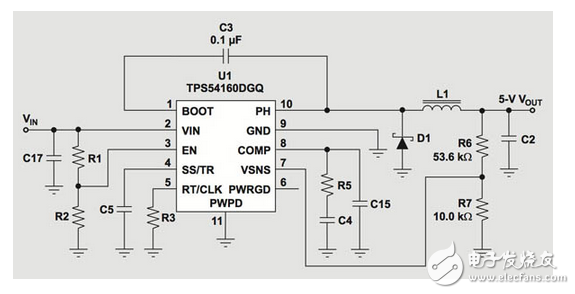
资料下载

将电感器集成到电源模块中的设计折衷
将电感器集成到电源模块中的设计折衷
模块化的DC/DC转换器(“调节器”)非常流行。将电源所需的所有元件集成到一个包中,节省了空间,简化了电路设计(如果与从头安装的设备相比有额外的成本)。看到techzonesm文章”完成电源模块为基础的解决方案,电感的作用。”)
作为第一区第(“直流/直流电压调节器:如何选择之间的离散和模块化设计”)在这一系列讨论,电感证明棘手的挤包。它是由一些开拓性的供应商完成的。然而,如果真的是这样的话,使用分立电感器的模块将迅速下降,但销售仍然保持健康。这是因为,事实上,集成电感器引入了一个折衷方案。
本文基于前面的介绍,描述了这种设计权衡,增加了开关频率,允许使用较小的电感器,但以效率为代价,使用德克萨斯仪器中的示例参考电路。

Upping the frequency
The inductor plays an important role in a switching regulator and its performance is largely determined by its size (see the previous article, “The Inductor’s Role in Completing a Power Module-Based Solution,” for more detailed information)。 Unfortunately, inductors tend to be bulky, for example, of the order of 400 to 750 mm³ for a switching regulator used in a mobile device.
The trick the semiconductor vendors have used to shrink the inductor, such that it can be shoehorned into the module, is to increase the switching frequency. It turns out that the inductor value (inductance) required for a given switching regulator is inversely proportional to switching frequency for equal peak-to-peak ripple current.
声明:本文内容及配图由入驻作者撰写或者入驻合作网站授权转载。文章观点仅代表作者本人,不代表电子发烧友网立场。文章及其配图仅供工程师学习之用,如有内容侵权或者其他违规问题,请联系本站处理。 举报投诉
- 相关下载
- 相关文章








